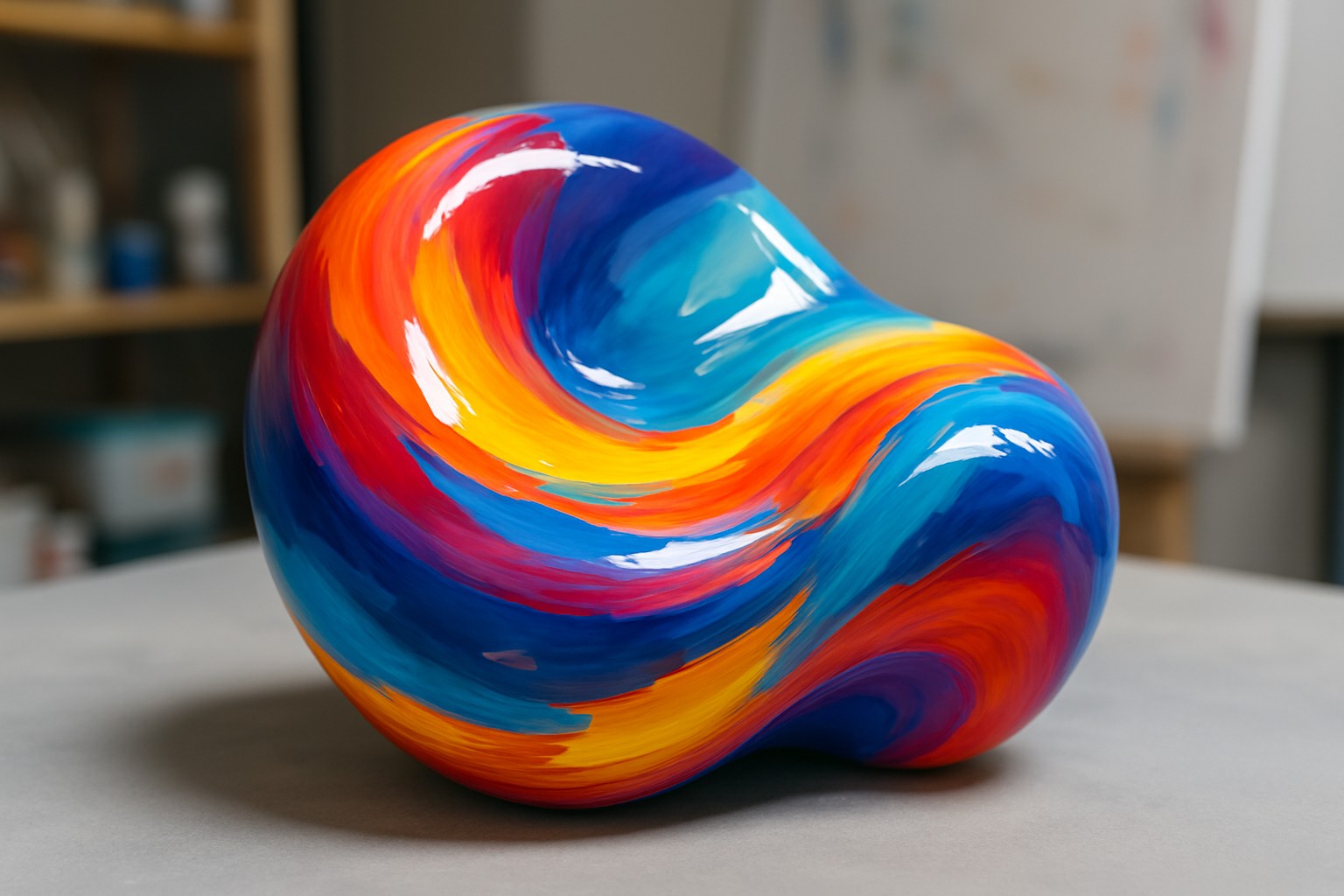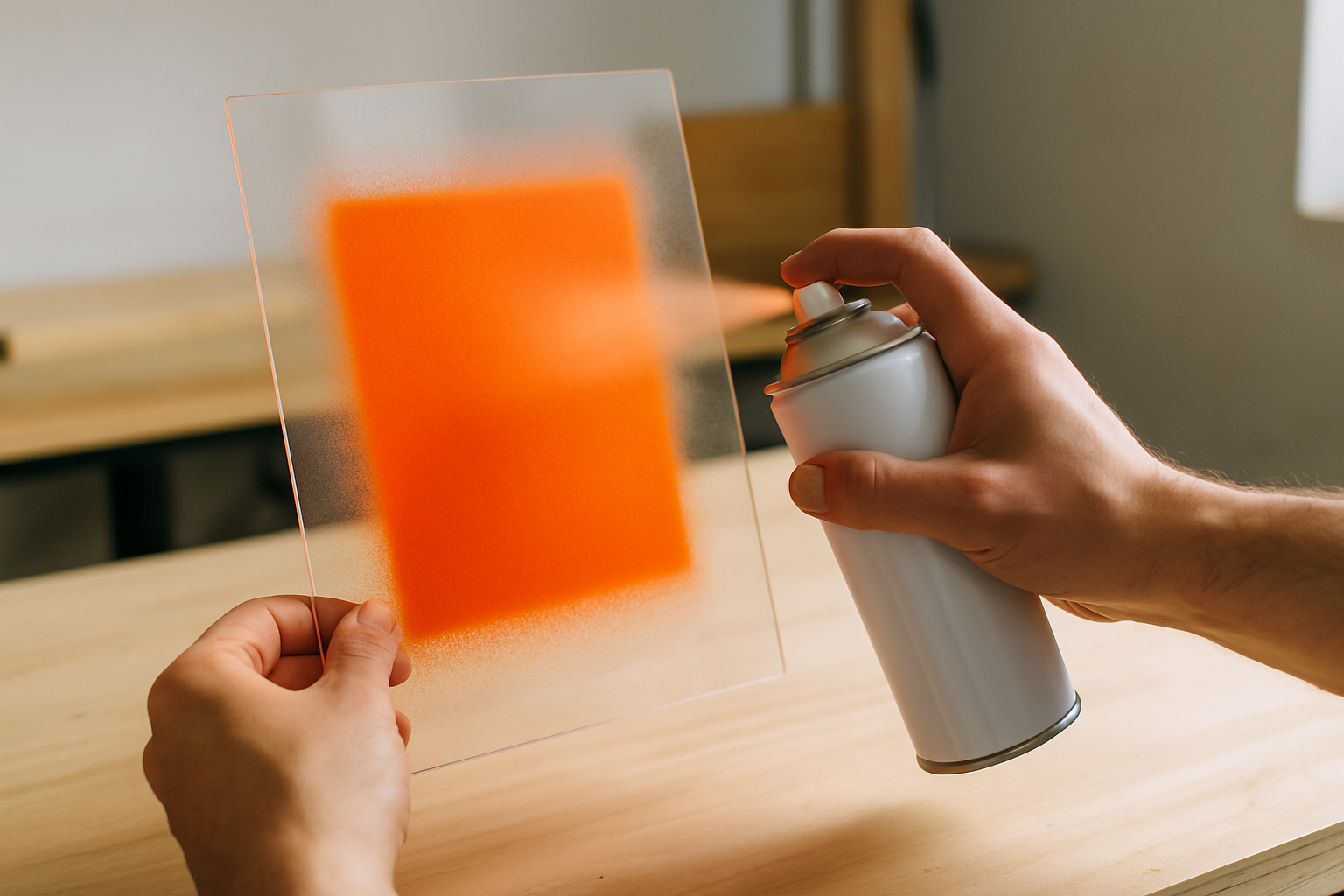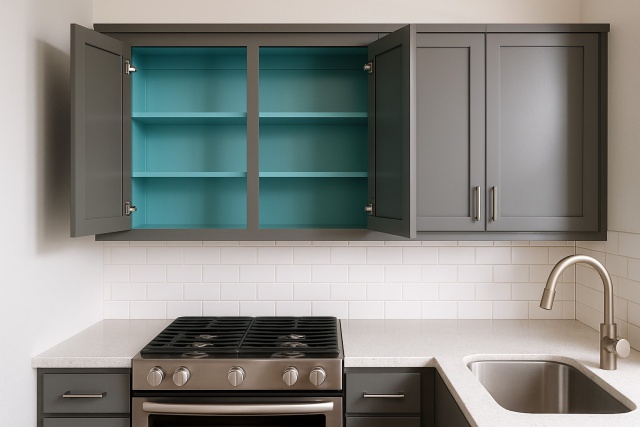Can You Paint Acrylic Plastic? What Actually Works

This handy guide takes you through the proper way to paint acrylic plastic and helps your finish hold up beautifully over time.
- Get the lowdown on prepping a non-porous surface the right way so your paint sticks and looks fresh longer.
- Dive into primers and paints tailored for acrylic plastic because one size doesn’t fit all here.
- Follow easy step-by-step tips to apply paint like a pro and get a smooth flawless finish you’ll be proud of.
- Find out how to properly seal and shield your painted masterpiece from scratches and harsh UV rays.
When you're wondering can you paint acrylic plastic, it often sparks questions about how well the paint will stick and how long it might last before showing signs of wear. This guide walks you through whether acrylic plastic is even paint-friendly and shares the most reliable methods to get a finish that’s not only durable but also looks great.
Acrylic plastic is prized for its crystal-clear look and toughness, which is why it’s often the go-to material for displays and décor that need to shine. Its silky smooth, non-porous surface can be a bit of a pain when it comes to painting—stuff just doesn’t want to stick easily.
Understanding Acrylic Plastic and What It Really Means
Acrylic plastic is often recognized by brand names like Plexiglas or Lucite and is beloved for its crystal-clear optical clarity and impact resistance. Crafted from polymethyl methacrylate (PMMA), acrylic finds its way into many places—from eye-catching signage and aquariums to car parts and stylish home decor. Its smooth glossy surface plays hard to get with adhesives and paints so giving it the right prep work is vital if you want your paint to stick around.
Is It Really Possible to Paint Acrylic Plastic? Here’s What You Need to Know
You can absolutely paint acrylic plastic but it’s not as simple as using just any paint. To get results that hold up and look good, you must pick the right paint, prep the surface carefully, and use primers designed for plastics to help the paint stick and stay put.
- Acrylic-based paints made specifically for plastic surfaces tend to offer fantastic flexibility and really stick like a champ.
- Spray paints labeled safe for plastics usually deliver a smooth, even finish that avoids those pesky brush marks.
- Epoxy paints provide tough, chemical-resistant coatings that stand up well in high-wear situations like the trusty workhorse of the paint world.
- It’s generally best to steer clear of regular oil-based paints since they often fail to stick properly and can cause annoying bubbling.
- Some enamels can do the trick if you pair them with the right primers, which help keep peeling at bay.
Step-by-Step Guide on How to Successfully Paint Acrylic Plastic (Because Getting It Right Matters)
Cleaning and sanding, priming and painting all chip in to deliver that smooth long-lasting finish on acrylic plastic.
Start off by giving the acrylic surface a thorough cleaning to whisk away dirt, oils or stubborn residues.
Gently sand the area with fine-grit sandpaper just enough to rough it up and help the paint grab hold.
Slap on a primer made specifically for plastic. It’s the secret sauce that helps the paint stick like a charm.
Pick a paint that’s known to play nicely with acrylic plastic.
Paint on several thin and even layers using light brushstrokes rather than a heavy-handed pour to keep drips at bay.
Patience here is key. Let each coat dry fully before going in for the next and follow what the product says on the label.
If you’re feeling fancy, seal the painted surface with a clear protective topcoat to lock in your hard work and keep it looking sharp.
Try to steer clear of heavy sanding since it can easily scratch the plastic, which is something you definitely want to avoid. Apply thin, even layers of paint because it really helps keep those pesky runs at bay.
Getting Acrylic Plastic Ready for Action with Cleaning and Surface Prep
The first and most important step is to give the acrylic plastic surface a good thorough cleaning. I’ve found that a mild detergent mixed with warm water or isopropyl alcohol does a fine job wiping away fingerprints, grease or dust. It’s best to avoid harsh solvents like acetone because they tend to damage the plastic and leave it cloudy.
Once the surface is nice and clean, go ahead and gently sand it using 400 to 600 grit sandpaper. This step is important because it creates tiny scratches that help the paint grip the smooth acrylic like a pro. Remember to use light, circular motions. There’s no need to dig in or leave deep marks since we’re aiming for subtle here.
How to Pick the Best Primer and Paint for Acrylic Plastic That Actually Stick Around
Primers are like the secret handshake that helps paint really stick and stay put on acrylic plastic for the long haul. Picking a good primer specifically made for plastics usually does the trick in keeping paint from peeling away and preventing the surface from falling apart.
- Primers crafted just for plastic that form a chemical bond with acrylic surfaces so they stick like a charm.
- Sandable primers that fill in annoying imperfections and help you get a smooth almost flawless finish.
- Acrylic spray paints specially formulated for plastic that deliver vibrant colors and stay flexible to avoid cracking.
- Tough-as-nails enamel paints that build a durable coating but need primers that get along with them.
- Two-part epoxy paints that offer the hardest finish and stand up to chemicals perfectly for functional parts that take a beating.
Using the wrong primer or skipping it often leads to paint bubbling, peeling or cracking—an all-too-familiar headache. Plus, solvent-based paints that aren’t a great match for acrylic can cause surface crazing or melting. To dodge these pitfalls, it’s smart to double-check product labels to ensure they work with acrylic plastic or PMMA materials.
Handy Tips for Painting Acrylic Plastic Like a Pro
Applying primer and paint in thin, even coats usually does the trick for the best results whether you’re spraying or brushing. Spraying often gives a nicer, smoother finish and helps you avoid those pesky brush marks. It works best when you have a clean, controlled space with low dust and good ventilation—no surprises there. Be sure to follow the recommended drying times between coats because rushing it never ends well.
To get that polished professional finish we’re all aiming for, it’s usually best to go with several thin layers of paint instead of one thick coat. If you’re feeling picky, lightly sanding between coats using super fine grit paper (800-1000 grit) can work wonders to smooth out imperfections.
Sealing and Finishing to Keep Your Painted Acrylic Plastic Looking Sharp
A clear topcoat acts like a trusty shield protecting painted acrylic plastic from scratches and everyday wear and the harsh sun that can cause fading or a chalky look.
- Polyurethane clear coats are known for their tough-as-nails hardness and solid chemical resistance, making them the go-to choice for surfaces that take a beating.
- Acrylic clear coats usually hold onto their shine while staying flexible which is why they’re a favorite for decorative pieces that need a bit of flair.
- Epoxy topcoats lay down thick glass-like finishes that catch the eye but they demand attention to detail during mixing and curing to nail the perfect result.
- Applying these requires thin layers and letting each one cure completely — this patience pays off by keeping cloudiness and peeling at bay.
Typical Challenges and How to Tackle Them
Problems like peeling paint, bubbling, weak adhesion or uneven finish can really put a damper on any DIY painting project, especially when you're trying to figure out can you paint acrylic plastic. More often than not these headaches boil down to skimping on surface prep or mixing materials that don’t play nicely together. It’s worth taking a closer look at your cleaning, sanding and primer choice as well as the environment where you’re applying the paint.
- Make sure the acrylic surface is spotlessly clean and completely free of any oils before you even think about priming. This step really makes a difference.
- A little light sanding goes a long way because it gives the paint something to hold onto instead of just sliding off.
- Stick to primers made specifically for acrylic or plastic surfaces since they are designed to work well with these materials.
- Avoid painting when humidity is very high or temperatures fall below 50°F because these conditions can interfere with how the paint sets and cures.
- Apply your paint in thin, even layers rather than thick ones. This helps prevent bubbles and keeps the finish smooth.
- Give the paint plenty of time to dry and fully cure before you handle it or add any sealers. Patience really pays off here.
When it comes to painting acrylic plastic, patience and careful preparation really hold the cards. Rushing through or cutting corners usually throws a wrench in the works—problems pop up that a bit of extra care could have easily nipped in the bud.

Questions & Answers
Can I use regular spray paint from the hardware store on acrylic plastic?
No, regular spray paint just won’t cut it. You need spray paints specifically labeled safe for plastics. The usual hardware store paints often have solvents that can make acrylic craze or melt before your eyes. Paints made for plastic have the right mix of chemicals to stick properly and flex with the material without causing damage.
Is it absolutely necessary to sand the acrylic before painting?
Yes, sanding is one step you definitely don’t want to skip. Acrylic’s surface is super smooth and non-porous so paint just doesn’t want to grab onto it. By lightly sanding with 400-600 grit sandpaper, you’re giving it a little texture like adding a bit of tooth that helps primer and paint hold on tight and keeps peeling at bay down the line.
What is the most common mistake people make when painting acrylic?
The classic blunder is slapping on one thick coat instead of several thin ones. Thick layers drip and bubble and take forever to dry which often leads to peeling. Applying multiple thin even coats with some patience for drying in between will get you a finish that looks sharp and lasts longer.
Do I need to use a clear topcoat after the paint dries?
You might be able to get away without it but a clear topcoat comes highly recommended. It acts like a trusty shield against scratches, UV fading and everyday wear and tear and helps your paint job stick around for the long haul. This is especially handy for anything that’s handled a lot or spends time outside.
Can I use acetone or nail polish remover to clean the acrylic surface?
Oh no, steer clear of those! Harsh solvents like acetone, nail polish remover or strong thinners can leave your acrylic permanently cloudy or crazed and even dissolve it altogether. Instead, a mild detergent with warm water or some isopropyl alcohol works wonders for cleaning grease and fingerprints before you start painting.
How long should I wait for the paint to fully cure before using the item?
Even if the paint feels dry after a couple of hours, it’s not ready for prime time yet. You’ll want to wait at least 24 to 48 hours for the paint to harden fully before you handle the item. If you want a finish that really stands up to daily use, it’s best to follow the paint maker’s instructions and wait from a few days up to a week.





